Can you become fluent in a new language with Duolingo, or is it a waste of time? Find out by reading my honest Duolingo review.
When traveling the world and learning about other cultures, I always find myself wishing I were fluent in that language.
I’ve always been intrigued by the idea of language learning. After all, learning a language is the best way to experience a culture.
What’s the best way to become fluent? Is becoming conversational more critical? These are the type of questions that I think about.
Learning a language on the go is a huge obstacle I’ve had to overcome. That’s where the Duolingo app came into play for me. It’s super easy to use while traveling!
My full Duolingo review will reveal if it has helped me become more confident in speaking a foreign language. Continue reading to find out!

What is Duolingo?
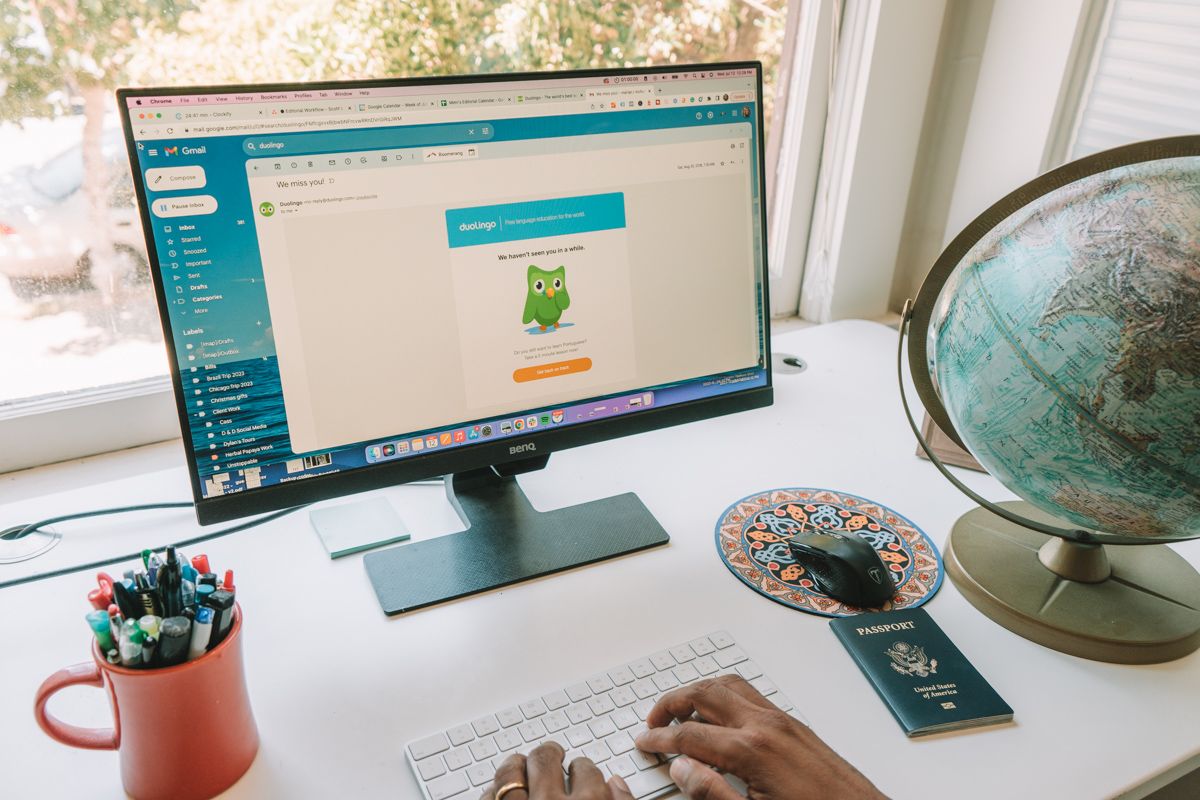
Duolingo is the most popular and most downloaded education app on the market today. This app turns language-learning into a game.
Gamified learning helps people (including myself) view language lessons as fun rather than boring. Incorporating games helps keep motivation up.
There are 5 million Duolingo users each day. With over 500 million downloads worldwide, Duolingo is a massive portion of the app market.
Duolingo is a free app available for both iOS and Android. There is also a website version, which generates 5.5 million users per month.
The app provides multiple different learning approaches. You’ll use several language-learning tools like flashcards, matching, listening, and writing.
Duolingo also has a great community where you can compete against others to help motivate you to learn the language.
A Quick Look at Duolingo as a Company
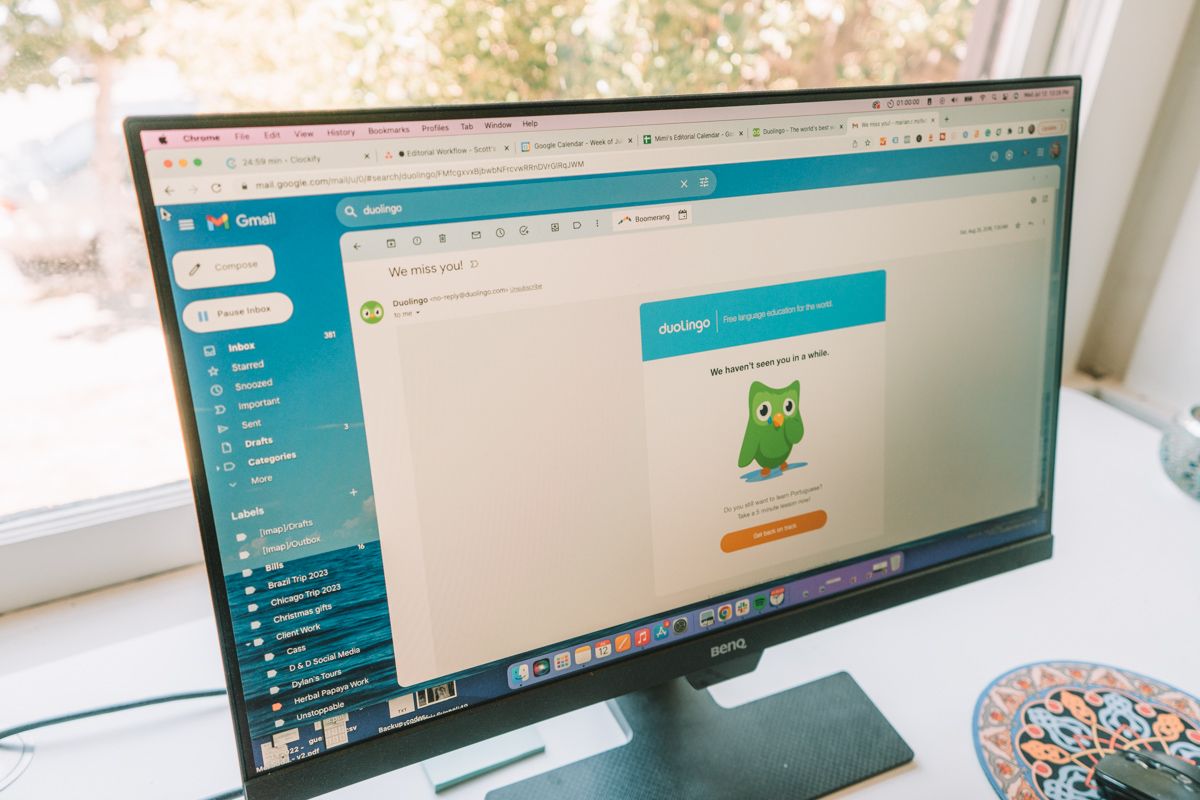
History of Duolingo
Luis von Ahn and Severin Hacker created Duolingo. Luis was a professor at Carnegie Mellon University in Pittsburgh, and Severin was one of his post-graduate students.
Luis previously gained recognition for selling the infamous reCAPTCHA company to Google. In 2009 he wanted to start a new project that revolved around education.
Luis grew up in Guatemala and saw how difficult it was for some families to learn English because of the price. He thought free education would be the future.
Thus, in 2011, Duolingo was born. By 2012, you could download Duolingo on the Apple app store and, later in 2013, in the Google Play Store.
DOWNLOAD DUOLINGO APP HERE:
How Does Duolingo Make Money?
Since Duolingo is free to use, you might wonder how they make money.
If you’re using the free version of Duolingo, you will likely have come across multiple ads.
Ads are a popular way to make money from something free. As of 2021, 94% of its users were using the free version of the app. Since Duolingo’s goal is to make language learning available to the masses, this only makes sense.
In 2021, 6% were using the subscription service, then called Duolingo Plus (now Super Duolingo).
Even though 6% seems small, paid subscribers account for around 72% of the revenue.
There are many opportunities for a free trial of Super Duolingo. I highly suggest you try this out! To lower the cost, there’s also a Super Duolingo family plan.
How much does a family plan of Super Duolingo cost?
You can either pay $119.99 for the year, which comes out to be $9.99 per month and covers up to six users. No monthly plans are available for this, so once you purchase, you’ll have Super Duolingo for an entire year, and you have to pay upfront.
I chose an individual plan since I didn’t need a family plan.
The individual plans do have a monthly payment option. You can get 12 months at once for $6.67 per month or one month at a time for $12.99. I chose the year-long membership because I wanted to learn for multiple months.
The other way Duolingo makes money is through in-game purchases. These come from the shop as gem purchases, streak freezes, or XP boosts (XP stands for ‘experience points’).
On top of all that, Duolingo is now trying something new with the addition of AI. This new subscription is called Duolingo Max ($168 annually or $30 monthly). It uses the Duolingo AI chatbot to further your language learning.
How Does Duolingo Work?
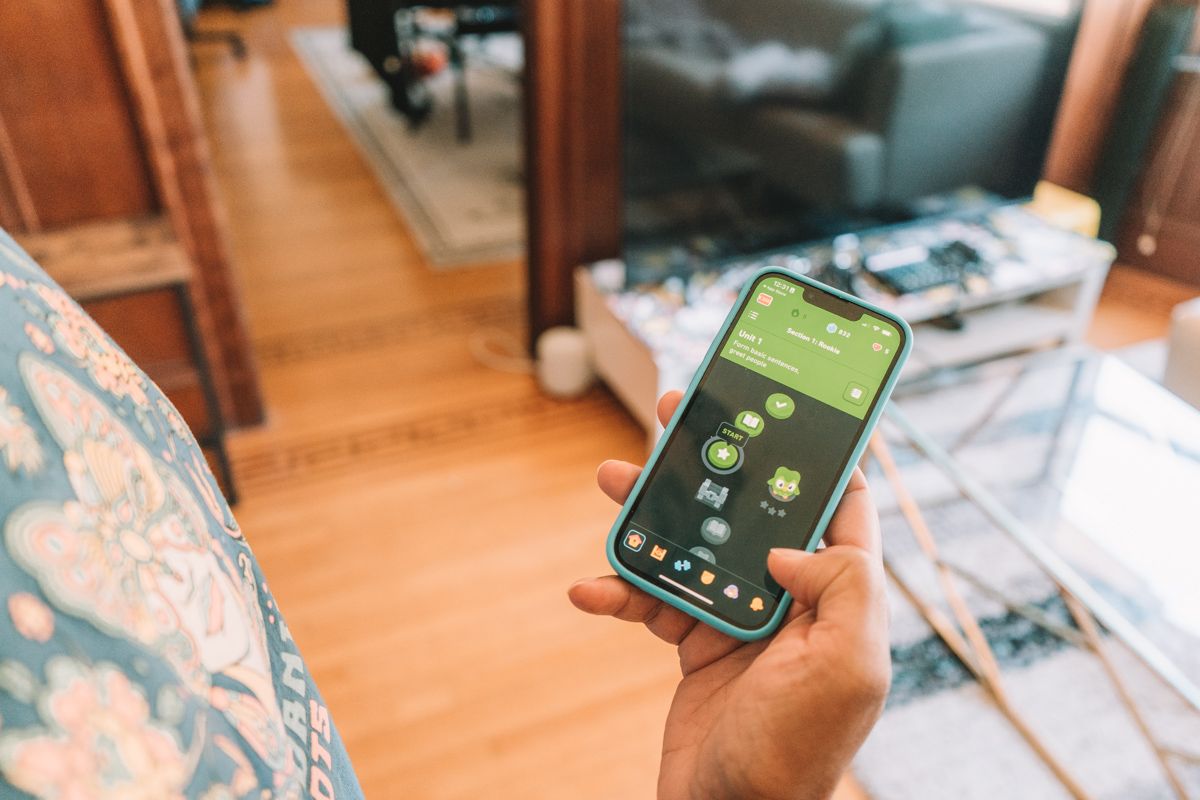
Choose a Language
When you download the language learning app Duolingo, you’ll first set up your profile.
After this, it’s time to select a language. I suggest starting with just one language. Practicing multiple languages at once becomes difficult, especially for a beginner.
There are 43 languages, 39 of which are available to English speakers. The Duolingo Spanish course is the most popular of the language courses available. English speakers have a more extensive selection of languages to choose from.
I chose Spanish as my target language because I’m in often in contact with a native speaker of this language, and I know it’ll come in handy.
Learning languages is hard, so pick one that you think you’ll enjoy the most.
You can always switch to other languages if you don’t like it. Adding a language will not eliminate the progress you made on the others.
Finding Your Level
After you have chosen your first of many Duolingo courses, you will have these options:
- To start at level one (if the language is entirely new)
- Take a test to figure out what level you are
If this is your first time learning this language, click “Start from scratch,” and you’ll find yourself in lesson one.
Even if it’s not a new language to you but it’s been a while, I suggest starting at the very beginning as a refresher.
Goals
The next step in creating your Duolingo account is selecting your goal for how much time you’ll spend learning each day. You’ll have a total of four different options to choose from.
The time goals per day are either five minutes (casual), ten minutes (regular), fifteen minutes (serious), and twenty minutes (intense).
Start slow with either five or ten minutes. Things come up in real life, and you want consistency in the early stages.
Modules
If you only plan to do a few lessons daily, you’ll most likely be in the general modules section. These Duolingo lessons have a combination of learning styles in each of them.
There will be speaking exercises, as well as writing, matching, and listening activities. You can skip the speaking and listening exercises if you’re in a situation where you aren’t able to do them.
You’ll get five hearts daily in the free version of Duolingo. These hearts go away if you miss a question.
If you run out of hearts during a lesson, that lesson will either be over, or you can do different things to receive more.
A speaking exercise can help you hone your conversational skills. So I would suggest not skipping these if possible.
The speaking activities were monumental in improving my speaking skills and being able to order at restaurants. Growing my skills gave me the confidence to talk more with native speakers.
Each lesson you complete will give you at least 10 XP. The XP used to be for crowns and to show your expertise in all the languages you’re learning.
These days in Duolingo, the XP is for the different leagues you can be put into.
The types of lessons in these can vary. Examples include learning how to describe your home, ordering at a restaurant, and shopping for clothes.
There are various units within each section of a language.
For example, if you’re trying to learn Spanish, the Spanish course has 19 units in section 2 and 20 in section 3.
At the end of each unit, there will be a review of everything you’ve learned. Once you complete that, you can move on to the next unit.
Review Mistakes
Duolingo offers more than the basic learning strategy. Clicking the dumbbell icon at the bottom takes you to the page where you can find more learning activities.
The dumbbell icon is where I started to see the most significant boost in my language skills.
Free users only have access to see mistakes, but you won’t be able to unlock the practice without access to the Super Duolingo subscription.
I don’t think this should be part of the Super Duolingo perks, but I understand why. If you have Super Duolingo, you can start the 20 XP activity.
You’ll review ten mistakes you’ve made recently, which benefited me as I usually struggle with the same concepts. Reviewing what I already know doesn’t help that.
Streak Freezes
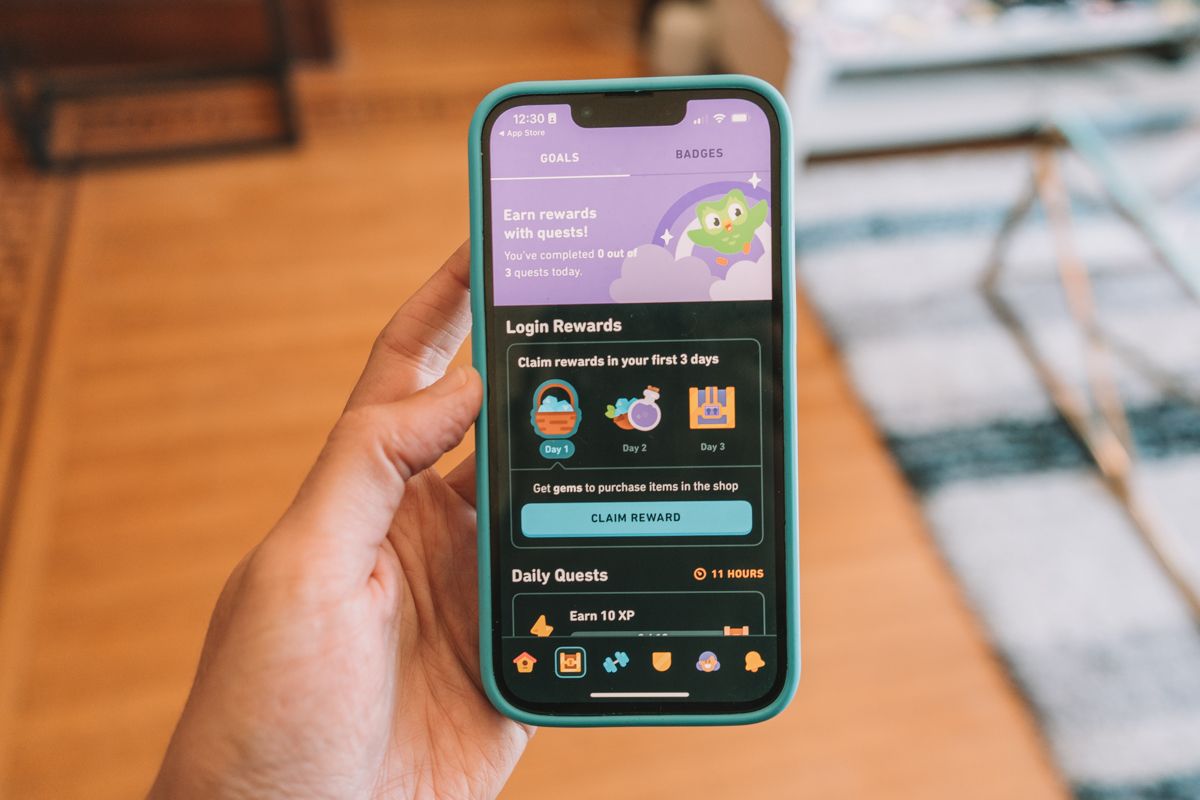
Streaks are one of Duolingo’s most well-known features. You will add to your current streak every day that you achieve your goal.
This feature keeps people coming back day after day, but I don’t think it’s super beneficial to language learning.
It sends the wrong message that the biggest goal when you want to learn a language is to do the bare minimum each day. Advanced learners will know that getting where you want to be takes a lot of dedication.
But, if you miss a day, fear not, as there are streak freezes!
These streak freezes will hold your current streak in place in case you accidentally miss a day. This seems like a huge item in Duolingo, and you’d think it would be hard to obtain, right?
Wrong. Obtaining new streak freezes is super simple. More times than not, if you complete a lesson, the first reward from the chest will be another streak freeze.
You can only have a total of two streak freezes at a time. So if you have both, then you won’t be awarded anymore.
Other language learning apps don’t have this feature, and I believe they take away from the real reason to learn a language.
DOWNLOAD DUOLINGO APP HERE:
Duolingo Review: My Experience With Using the Duolingo App

Duolingo was the first language app I used. My main motivation for wanting to learn a new language was to have a better experience while traveling.
Everyone told me to download Duolingo, so I did. I enjoyed the gamified aspect of it. It made me learn vocabulary without realizing I was studying.
Other language apps can be more intense, which is sometimes necessary. However, the streaks got me hooked on Duolingo.
Seeing that number go up every day was a dopamine rush. And then comparing it to your friends was even better (sometimes).
Once that streak was gone, so was my motivation. When I started learning to speak Spanish again, I only used Duolingo as a supplementary tool, but I appreciated it for the extra practice.
The combination of running out of heart plus only being motivated by the streaks made me seek out other alternatives. These factors can halt your learning progress.
But on the positive side, it was a free education resource with many language courses to choose from. It got my foot in the door, and I’m happy for that!
Pros
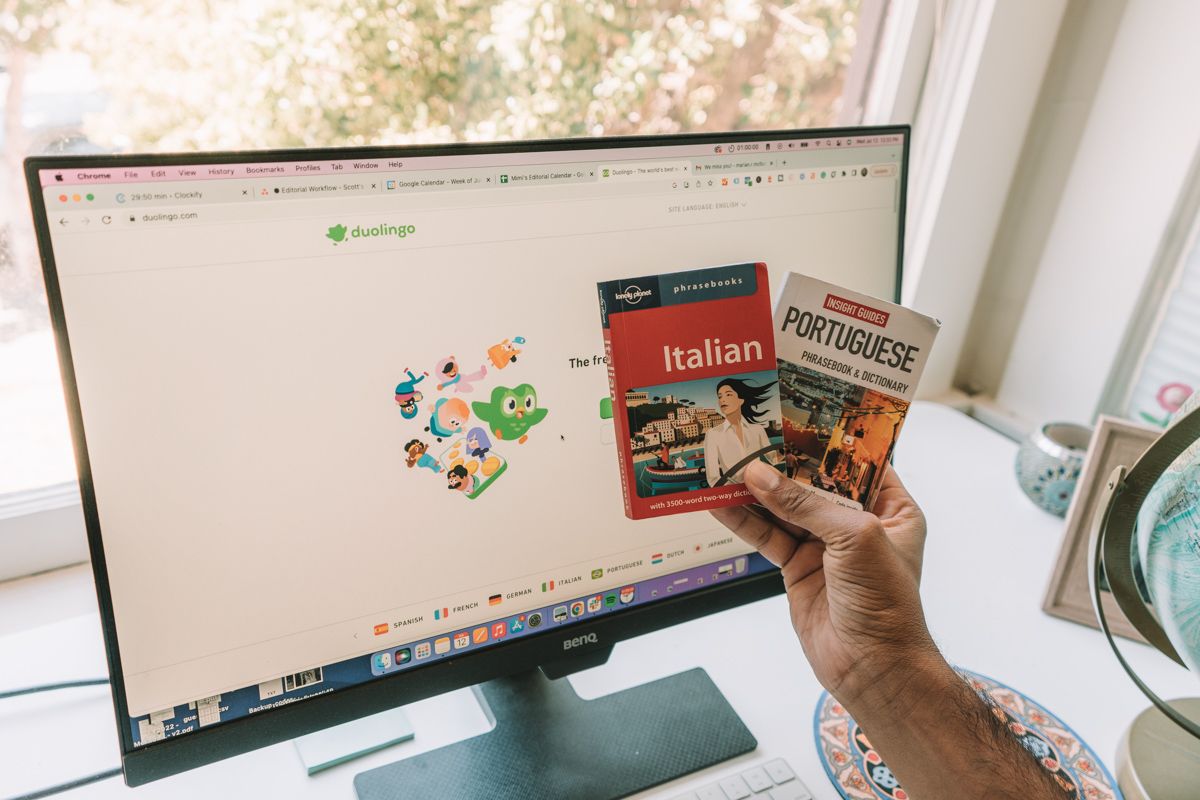
Free to Use
Luis von Ahn created Duolingo for the soul purpose of making language learning more accessible to the masses. I think everyone can agree that he accomplished this goal.
Multiple other language learning apps have studied and copied Duolingo’s monetization style. And for good reason – it works!
It’s remarkable how many features Duolingo gives you as a free user. Language learners everywhere should rejoice because many languages are free to learn with Duolingo!
Purchasing Super Duolingo isn’t necessary for your learning process through the app, and I’m happy that my Duolingo Spanish lessons are a great way to jump back into learning and will always be free and available.
Great for Reviewing a Language
Duolingo is the best language app to review a language you haven’t practiced in a while because it’s free to use and it covers basic concepts.
The most popular Duolingo alternatives all cost money, which has hindered me when I want to start learning Spanish again and go deeper with the language.
Picking my target language and going through modules was an easy transition into studying a language again.
If you’re a beginner, you won’t get bored easily and can get the vocabulary refresh you need.
Many Languages to Choose From
Being the largest language app on the market brings even more user benefits. One of the benefits is how many languages they offer.
A total of 43 languages are available on the Duolingo app. As a free user of Duolingo, you can take as many courses as you’d like. I’d suggest sticking with the same language for a long time, but you can do whatever you want.
And that’s the beauty of it! Sometimes I like to start a new language on Duolingo to figure out if I like the language enough to go deeper.
Cons

Only for Beginners
Duolingo has effectively gamified language learning, which may mean it’s an app that’s only good for beginners. After using other apps for a while, I started to realize this.
When starting a fresh language, you’ll see a lot of new words. With these come new sentences, but the lack of grammar explanations makes it difficult to use as an all-in-one language app.
I don’t think this style is terrible to have. Yes, there are other resources out there that can get you more prepared to use the language with native speakers.
Duolingo is great for all ages and serves its purpose in the language learning app circle.
Caters to English Speakers
As an English speaker, you have the most extensive list of languages. And on the surface, this makes sense. English is one of the most popular languages in the world.
But languages like Mandarin and Spanish have millions of speakers worldwide. If you’re not an English speaker and you’re trying to learn a less widely spoken language, you may have some difficulty.
It takes time to create a learning course in a different language; I get that. But if you want to make the most significant worldwide impact, creating many courses in other languages is necessary.
Encourages Short Lessons to Continue Streak
This next Duolingo con is one I genuinely believe in. Seeing the number increase on your streak is a bigger motive to learn the language than the language itself.
It has its benefits, sure.
But many times, I found that when I’ve had a long streak and then I lost it, I didn’t get on for months. I can truly only blame myself for that.
Even so, it showed me that I was only getting on Duolingo to increase my streak. To become conversational, you must want to learn the language.
Most language learners would agree with this premise.
If you don’t have Duolingo Plus, you can complete the fastest lesson in the app. Simply click the heart and click “Practice to regain hearts.”
I have done these lessons in under one minute, which counts towards your streak.
Speech Exercises are Broken
One of the most important exercises for learning languages is speaking out loud. This is something you obviously need to practice if you want to be able to speak with native speakers.
Yes, Duolingo has questions in their lessons that ask you to speak. That’s not the issue. The issue is you can sometimes say the completely wrong sentence, and it’ll still say it’s correct.
This serious glitch simply cannot happen in a language-learning app. The best way to ensure you understand a language completely is by speaking it.
I love the popular alternative app Pimsleur simply because that’s what they focus on.
If Duolingo fixes this issue with the speaking exercises, then it can progress beyond a beginner-focused app.
DOWNLOAD DUOLINGO APP HERE:
Other Features and Activities in Duolingo
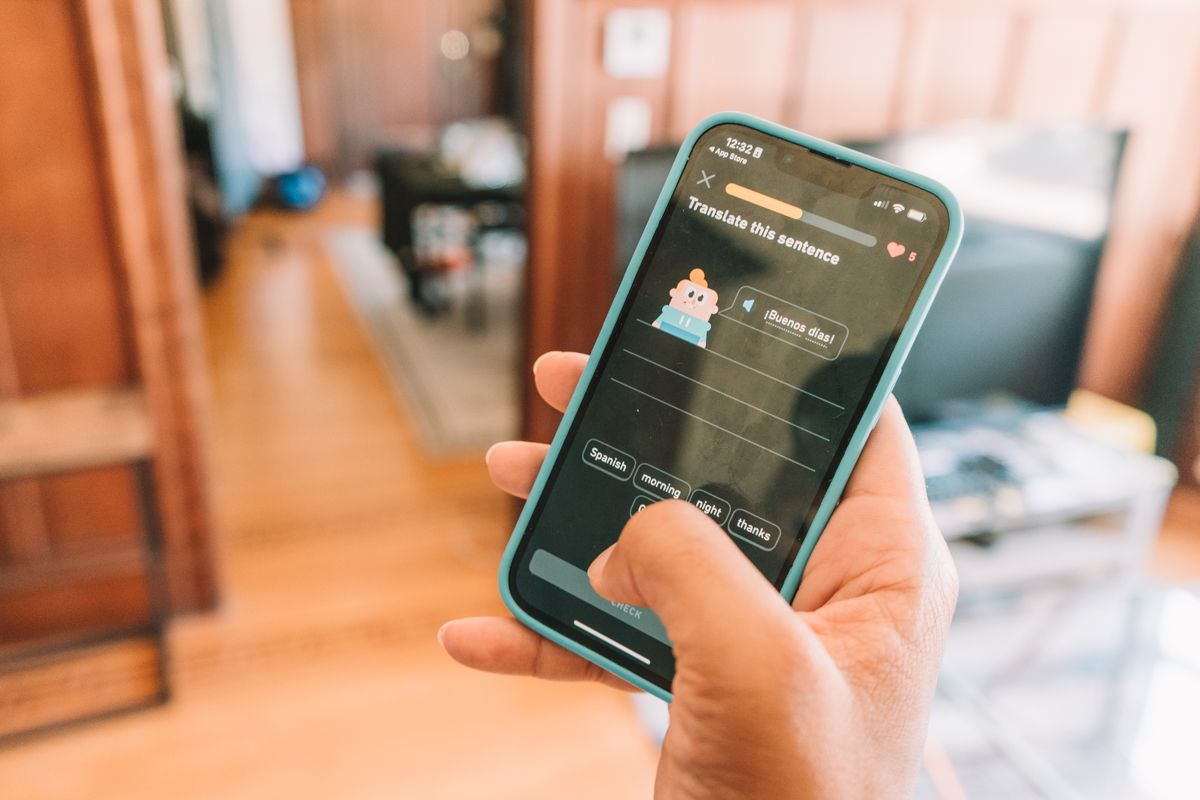
Quests
Friends Quest
Other goals can come in the form of a ‘friends quest.’ Once you add some friends, you can start a quest with them.
Some quests come in the form of activities like “Score 90% or higher in 9 lessons.” You’ll complete this type of friends quest together. Another type of friends quest is going head-to-head.
Quests motivate and drive you to better your language skills. If your friend needs to catch up in the quest, you can send them a nudge to get them going.
The nudge will notify their phone, reminding them to practice their target language.
What’s cool is that you and your friend don’t even have to study the same language to complete quests together.
Daily Quests
Besides hitting the daily goal you set for yourself, you’ll also get daily quests to complete. These quests are typically easy to complete, and you can do them at the beginning of your day.
The daily quests can include some of the following: ‘Earn 30 XP’ ‘Get five correct in a row in two lessons,’ and ‘Speak in ten exercises.’
You’ll receive a reward of gems or a streak freeze when you complete these.
Stories
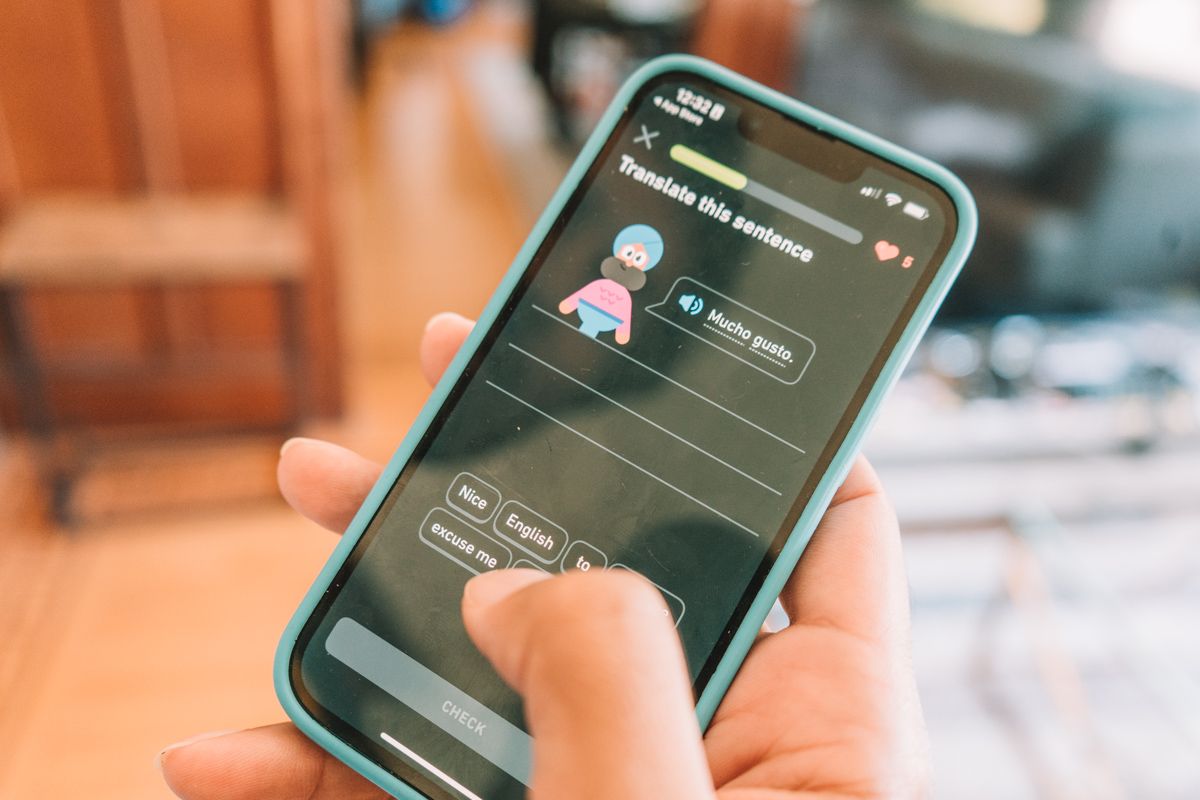
Duolingo stories are one of the most popular features they have. These are available whether you have Super Duolingo or not.
The stories are now part of the new learning path Duolingo rolled out in a 2022 update, which “challenge your reading and listening comprehension.”
Along your path in each unit, you’ll find a story. Once you complete that story, you can reaccess it in the section with the dumbbell at the bottom.
The goal here is complete immersion with the new words and phrases you’ve been learning. The stories will be between two different characters.
After following their conversation, you’ll have to answer questions about what they’re discussing.
These questions range from filling in the blanks, finishing the sentence, and translating sentences.
Context helps a lot here and has helped me become more conversational in the process.
The stories only take a few minutes to finish when you give the correct response.
To make these stories even harder, you can select the legendary version.
The only difference between the standard and the legendary version is that you don’t get hints in legendary. In the standard version, you can click on a word you’re unfamiliar with to get the definition.
Listen
Here’s a helpful addition for all of those audio-language learners out there. If you want to practice listening activities only, try out this section of the Duolingo app.
Not to be confused with the Duolingo podcast; this is in the same area as the stories. You can specifically choose to practice your target language by listening to audio clips.
Unfortunately, this feature is only available to those on Super Duolingo. That’s not to say you won’t ever have audio Duolingo lessons– they’ll still be available in the general units.
Each audio lesson is ten questions. They range from new queries to ones that you have missed in the past.
Speak
Being truly fluent is hard. My goal when learning a new language is to become conversational.
It’s crucial to be able to carry a conversation when you’re traveling and want to experience new cultures.
Speaking lessons are the last activity you can practice in your review section. These often go overlooked and aren’t as popular because a lot of people are afraid of talking out loud.
For language learning, you HAVE to get over that fear. Each speaking exercise will play a sentence out loud, and you can click on words to figure out the definition.
Tap the volume icon next to the sentence to listen to the audio again. Once ready to speak, press “Tap to speak.”
You’ll receive ten exercises to complete to receive your XP reward.
Leagues

One of the top strategies that Duolingo uses to increase competition and motivation is its leagues. These leagues are a weekly competition against 30 random users.
Once you complete a lesson in Duolingo, you’ll automatically join a random league. You can view this league by simply clicking the shield button at the bottom of the screen.
The ranks in these leagues are based on the XP you receive by doing different lessons. The league you’re in and what place you finish will determine if you get promoted.
There are a total of 10 different leagues, and they are as follows: bronze, silver, gold, sapphire, ruby, emerald, amethyst, pearl, obsidian, and diamond.
The top 20 in the bronze league will get a promotion to the next level, as will the top 15 in the silver league and the top 10 in the gold league.
The top seven finishers in Sapphire leagues will move up a level. Lastly, the top five from the Obsidian League enter the Diamond League.
If you place outside these zones, you risk demotion to a lower league. You’ll get a prompt asking if you want to repair this when you get demoted.
It’ll cost you 2,000 gems, but you can stay in the same league for another week. I only see this as beneficial in higher-tier leagues that are much more competitive.
Refill Health
With the free version of Duolingo, you’ll have five hearts that represent your “health.” With each question you miss, you’ll lose a heart. Once all your hearts are gone, you’ll get a couple of options.
You can either buy back your hearts with Duolingo’s currency (gems) or do easy practice lessons to refill your hearts.
If you choose not to pay to refill them, then the lesson will end. To complete the lessons to regain your health, click the heart in the top right corner.
You can complete a lesson from here to receive one heart in return. These lessons normally take me one to two minutes to complete.
Sometimes you’ll get the option to watch an ad to receive one more heart. I normally say yes.
I’m not the biggest fan of this feature because I think five is a very small number. I see it as a ploy to persuade you tobuy Super Duolingo because you get unlimited hearts when you subscribe.
You can always start a free trial to see if you like the benefits of Super Duolingo.
The Shop
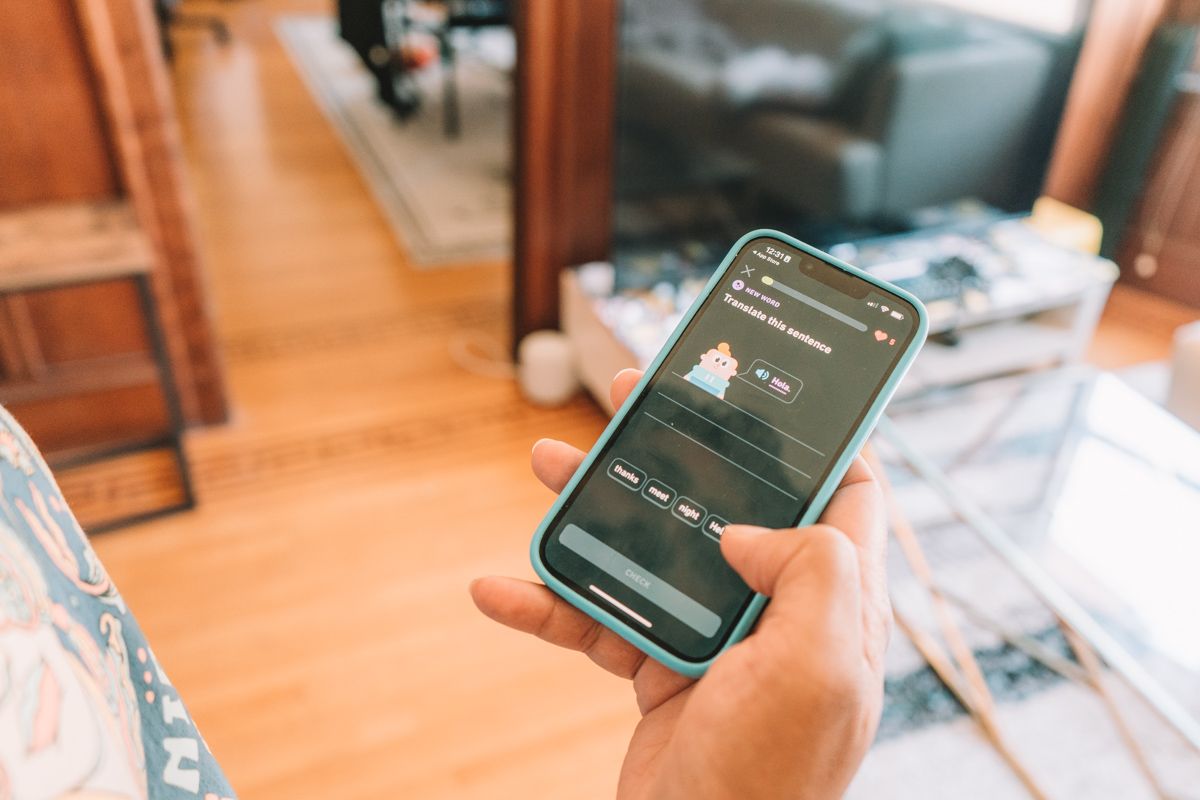
The least important feature of Duolingo is ‘The Shop.’
The Shop is where you can go and spend your extra gems. But there’s one problem…there isn’t much to spend them on.
Currently, only the Duolingo website has the shop logo. If you want to visit it on your app, simply click your gems.
You can only purchase a handful of things. For starters, you can buy those lovely steak freezes I talked about earlier.
You can also purchase an XP timer boost if you’re chasing a high league placing. These are great, and I actually use them a lot!
You can also purchase more gems with real-life money, but I don’t see much point in this.
This whole area of the app has a lot of potential, so hopefully, they will be working on something soon.
FAQs About Duolingo
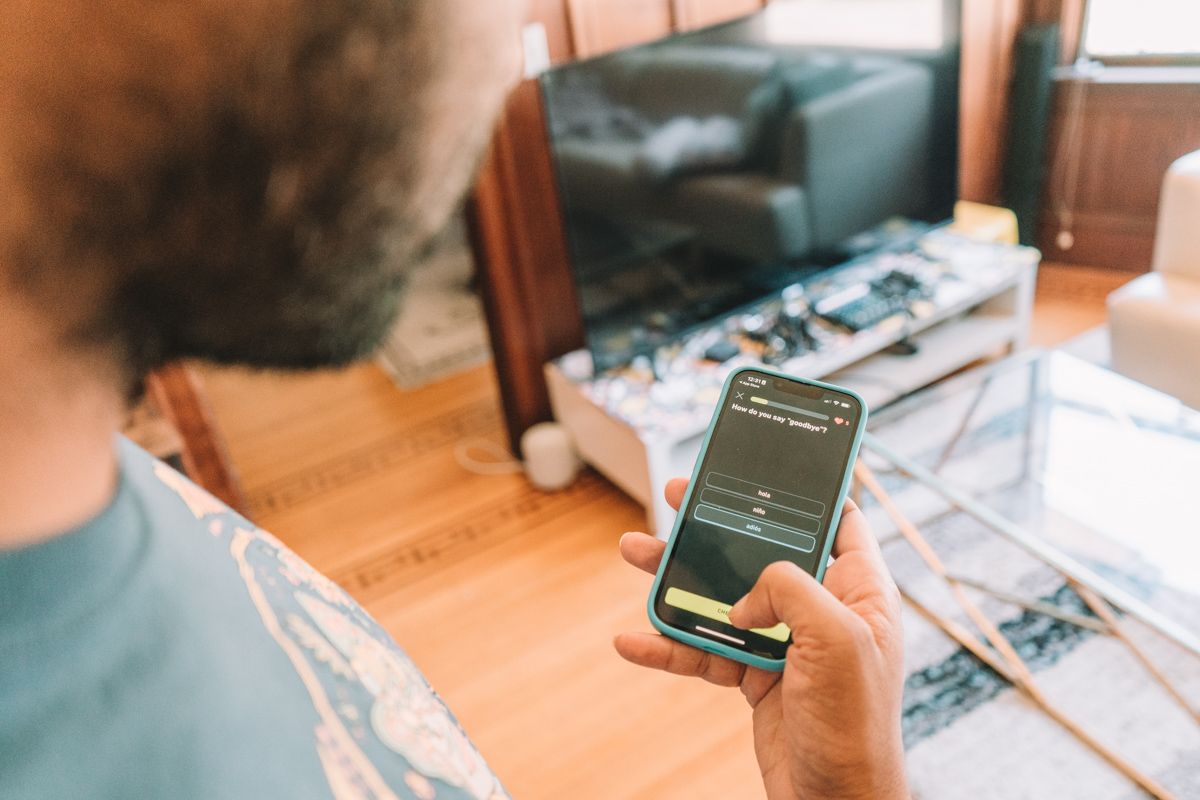
Can you become fluent from Duolingo?
No, you can’t become fluent in Duolingo. Fluency (meaning you know the language inside and out) is extremely hard.
When you’re fluent in a language, you don’t have to stop and search your brain for a word; you know most of the correct grammar.
It’s generally acknowledged that knowing 1,000 to 3,000 words is enough to have a conversation.
Passing the 10,000-word mark will place you in the native speaker category.
Is Duolingo better than Babbel?
There isn’t a simple answer to this. It comes down to personal preference. One has a recurring charge, and the other is free.
If you want to practice a language free of charge, Duolingo should be your preferred choice.
Meanwhile, Babbel takes a traditional approach to learning a language with more in-depth lessons. These two aspects make it a better overall language learner.
Is Rosetta Stone better than Duolingo?
Rosetta Stone launched in 1992, so it’s been around for quite some time now. Their approach is simple. Create a fully immersive experience for longer language retention.
Rosetta Stone also has some of the best speech recognition technology on the market. However, the big concern is the price. Rosetta Stone costs $299 as a one-time fee or $9.99 a month.
If you want a better immersion technique, choose Rosetta Stone. Duolingo is the better option for casual learners and people who want to learn a language for fun rather than necessity.
What is the success rate of Duolingo?
If you read many reviews online, Duolingo can’t truly teach you the language. It’s better suited for kids and beginners struggling to gain traction.
One study on Duolingo’s website says kids who use their Duolingo ABC for nine weeks have a 28% increase in literacy scores.
How long should I use Duolingo per day?
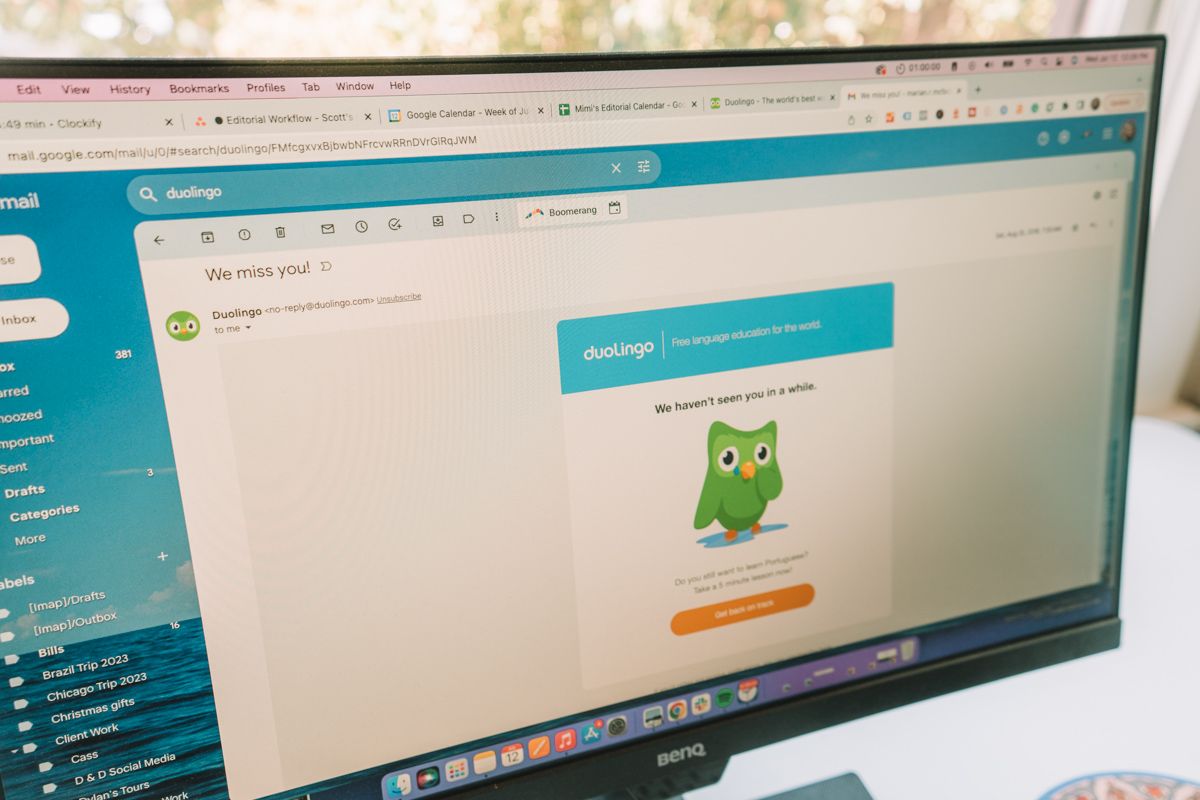
The longer, the better. Five minutes per day is the minimum goal, but I suggest setting the goal to at least 15 or 20 minutes to see any benefits.
What level does Duolingo get you to?
Duolingo designs their courses to get you to a B2 level, which means you can get a job in that language.
How much does Duolingo cost per month?
The majority of Duolingo is free to use. You can purchase Super Duolingo for 12 months at $6.67 per month or monthly for $12.99.
How long does it take to become fluent from using Duolingo?
You can’t become fluent in a language solely by using the Duolingo app. It’s better to use Duolingo as a supplemental tool.
Is Duolingo Plus worth it? Duolingo Super?
Duolingo Plus and Super Duolingo are the same thing. I don’t think Super Duolingo is worth the price, especially if you pay monthly.
There are better apps with similar prices that’ll teach you more about the language.
That said, a free trial is a low-risk option to see if it’s something you’re interested in.
Conclusion: So, is Duolingo Actually Any Good? Or is Duolingo a waste of time?

If you ask any passionate language learner, they’ll say Duolingo is a waste of time. I think this is a tad bit harsh. Duolingo has its benefits, especially in the earlier stages.
What I love about Duolingo is that they make their language learning app easy and fun. This app has helped me want to learn more and push myself to try more in-depth lessons.
Features like Duolingo Stories help you feel immersed without making you feel overwhelmed. But if you want to become truly conversational or even fluent, then Duolingo isn’t it.
Since Duolingo is free to download and use, it doesn’t hurt to try it out for yourself! You never know; it might spark something inside you to get serious with language learning.
DOWNLOAD DUOLINGO APP HERE:
ABOUT THE AUTHOR

Phillip Anderson
Phillip Anderson is a freelance travel writer, personal trainer, and adventure enthusiast. With years of travel experience under his belt, Phillip is an expert in finding the best deals through travel apps and websites. He knows how to find cheap domestic and international flights, like a flight to Peru for as low as $350.
When looking for cheap accommodations, Phillip combines his knowledge of websites like Airbnb, Booking.com & Hostelworld with more unique sites like TrustedHousesitters, for even more savings. Whether it’s flights, accommodations, or local experiences, he teaches travelers to make informed decisions, ensuring their adventures are both memorable and economical.
Looking for more travel-related tech? Check out these related articles below!
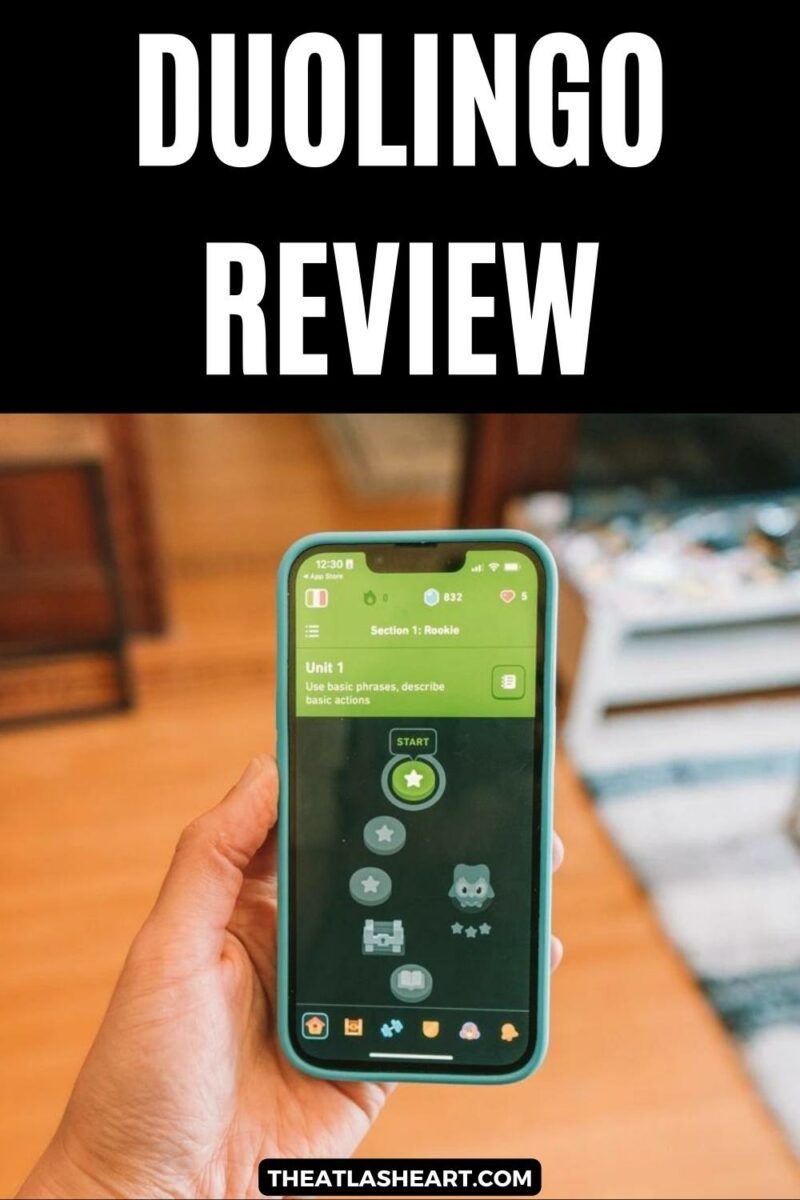
Pin this image for future reference



Duolingo is a decent (I’m being generous) language learning tool to keep in your “arsenal”, but on it’s own it is not going to get any language learner near fluency, and it has the potential to be significantly damaging or counterproductive to new learners.
A little background: I am a C1 level Russian speaker (native English speaker) who learned the bulk of my Russian on Rosetta Stone. I completed the Russian course on Rosetta Stone, learned about 4k – 5k words there, and then started using every tool at my disposal to continue my education. I probably now know something in the range of 7k – 8k words and have good (not great) grammar. After completing Rosetta Stone, I turned to Russian films and television shows, Russian cooking videos on Youtube, Russian music, and of course other apps to continue my education. I also speak frequently with a group of Russian friends.
At this point (after about 4 years of learning) I finally downloaded Duolingo, and used it (initially) to test my knowledge. However, due to bizarre sentence offerings, a complete lack of regard for colloquial speech patterns, and other techniques grounded in the monetization practices of Duolingo’s product (in other words the fact that penalization of the learner to incentivize the need for a subscription is more important than teaching the learner) I barely scored above the A2 level on my initial testing. This despite the fact that I enjoy complete conversational fluency with my Russian friends.
Since I am not a new learner, I didn’t allow this to discourage me from using the app entirely, but it definitely opened my eyes to exactly what Duolingo is and what it is not. For a new language learner however, Duolingo could be a devastatingly bad experience that turns them off to the language learning experience altogether.
Even today, I will run out of hearts over the course of practicing from time to time. Usually after an hour or so (7 or 8 lessons) I will have made a number of small errors that would seem insignificant or even go completely unnoticed by a native Russian speaker, but which are caught by Duolingo’s super nitpicky and entirely unforgiving standards. This type of punitive teaching is entirely counterproductive, and it is why so many users and former users now despise Duolingo. Myself included.
I will still use Duolingo to practice because, well.. why not. I’ll never pay for it. I have no problem being a drain on their server.. but I always warn new learners to stay far away from Duolingo until they’ve achieved at least some level of fluency (B1 or above) and then incorporate it as a practice tool only. Rosetta Stone on the other hand, is an amazing learning system, and I recommend it to everyone.
Duolingo is a great tool for people like me that want to learn something new to stimulate the brain. You have many opportunities to learn a language and push yourself to increase the amount t of words in that language. You may only have 5 hearts to start with but you can earn more by clicking the heart on the top right to earn more hearts. It will show more of the words you may need more help understanding. It’s fun and entertaining while learning. If your already fluent in a language you just aren’t challenged like some one who isn’t fluent. May you should try a new language.
Duolingo is a good start to learning something g new.